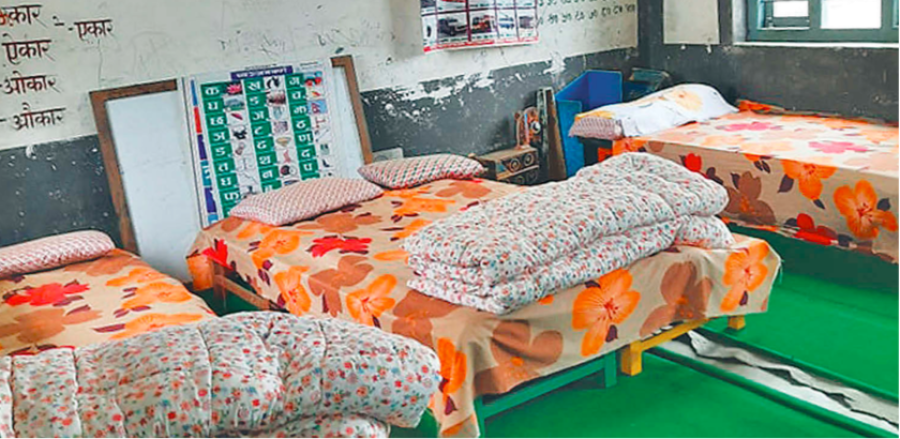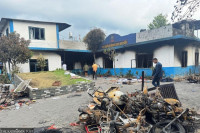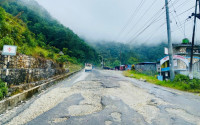Gandaki Province
In Gandaki Province, almost all quarantine centres are virtually empty
People have been reluctant to stay in the centres, local officials say.
Gandaki Province Bureau
In the wake of the coronavirus crisis, districts in Gandaki Province scrambled to set up quarantine centres, with local governments spending millions in the infrastructure and amenities. But the centres are virtually empty.
In Parbat, the local units spent a combined Rs5.4millions on those centres with capacity to accommodate 360. The local governments have invested an average of Rs 15,000 for each bed, according to Mukti Ram Rijal, chief district officer of Parbat.
But no one is using them.
In Phalewas Municipality, which set up quarantine centres with 212 beds, only seven people have been quarantined so far. Rijal said that the municipality office provided five beds each for 11 wards.
Hari Pangeni, chief administrative officer at Kushma Municipality, said his office has directly invested Rs 200, 000 in quarantine centres while other local units said they are yet to calculate the amount that went into the centres.
Over the period of the lockdown, an estimated 11,000 people have returned to Parbat, but only a small fraction of them were quarantined. Local unit officials said the returnees were reluctant to stay in quarantines.
In Baglung, the local units invested over eight million rupees on those centres. But here, too, the number of people in quarantine is negligible. In Galkot Municipality, only three have been quarantined so far; the number is the same in Bareng Rural Municipality. In Baglung Municipality, which had spent Rs1.5million, many people fled the quarantine centres after two or three nights.
Things are the same in Lamjung and Gorkha, where all centres in 11 local units are currently empty. Ishwar Regmi, chief of the health department in Gorkha Municipality, said no suspects were detected, hence nobody was sheltered in the quarantine centres. The quarantines altogether have housed 73 persons, but only one is being sheltered now.
In East Nawalparasi, a total of 768 centres were set up across eight local units. They have sheltered 32 only so far. “The centres are not necessary now as the rural municipality has strictly adhered to the lockdown and there’s no one coming from outside,” said Shashi Kiran Bastakoti, chair of Bulingtar Rural Municipality.
In Myagdi, the number of quarantined individuals is relatively high, with 353 sheltered so far. But only 23 people remain. The local units say they are yet to calculate the amount invested in setting up the centres.
While in Kaski, most of the quarantine centres were set up in hospitals, so the cost incurred was less, according to Hemanta Sharma, chief of the health department at the Metropolitan office. “We didn’t have to invest much in infrastructure and amenities as the hospitals already had them,” he said.
But in other districts, the cost has been high and local unit officials admit that the centres have been rendered more or less ineffective now. “We spent Rs 500,000 in setting up over a dozen quarantine centres,” Dev Kumar Nepali, mayor of Dhorpatan Municipality in Baglung, said. “Not one person has stayed there so far.”




 5.4°C Kathmandu
5.4°C Kathmandu








%20(1).jpg&w=300&height=200)

